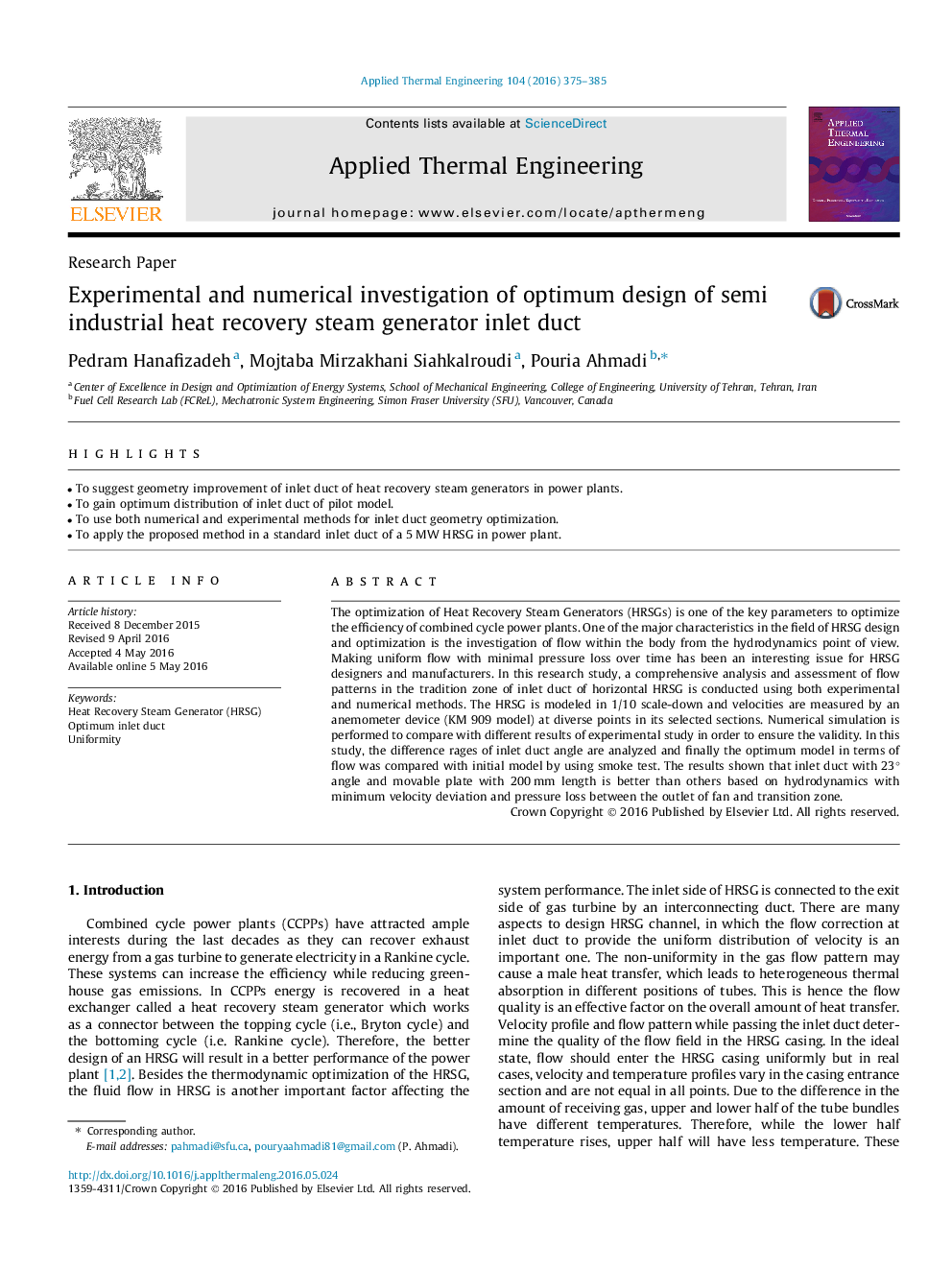| Article ID | Journal | Published Year | Pages | File Type |
|---|---|---|---|---|
| 644511 | Applied Thermal Engineering | 2016 | 11 Pages |
Abstract
The optimization of Heat Recovery Steam Generators (HRSGs) is one of the key parameters to optimize the efficiency of combined cycle power plants. One of the major characteristics in the field of HRSG design and optimization is the investigation of flow within the body from the hydrodynamics point of view. Making uniform flow with minimal pressure loss over time has been an interesting issue for HRSG designers and manufacturers. In this research study, a comprehensive analysis and assessment of flow patterns in the tradition zone of inlet duct of horizontal HRSG is conducted using both experimental and numerical methods. The HRSG is modeled in 1/10 scale-down and velocities are measured by an anemometer device (KM 909 model) at diverse points in its selected sections. Numerical simulation is performed to compare with different results of experimental study in order to ensure the validity. In this study, the difference rages of inlet duct angle are analyzed and finally the optimum model in terms of flow was compared with initial model by using smoke test. The results shown that inlet duct with 23° angle and movable plate with 200 mm length is better than others based on hydrodynamics with minimum velocity deviation and pressure loss between the outlet of fan and transition zone.
Related Topics
Physical Sciences and Engineering
Chemical Engineering
Fluid Flow and Transfer Processes
Authors
Pedram Hanafizadeh, Mojtaba Mirzakhani Siahkalroudi, Pouria Ahmadi,
